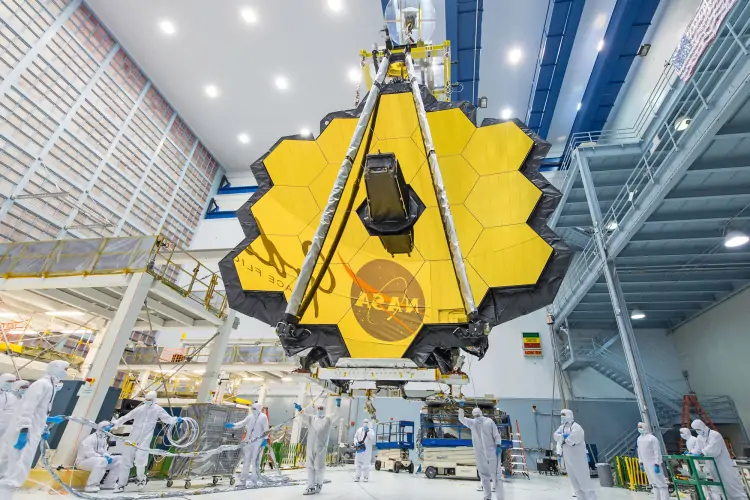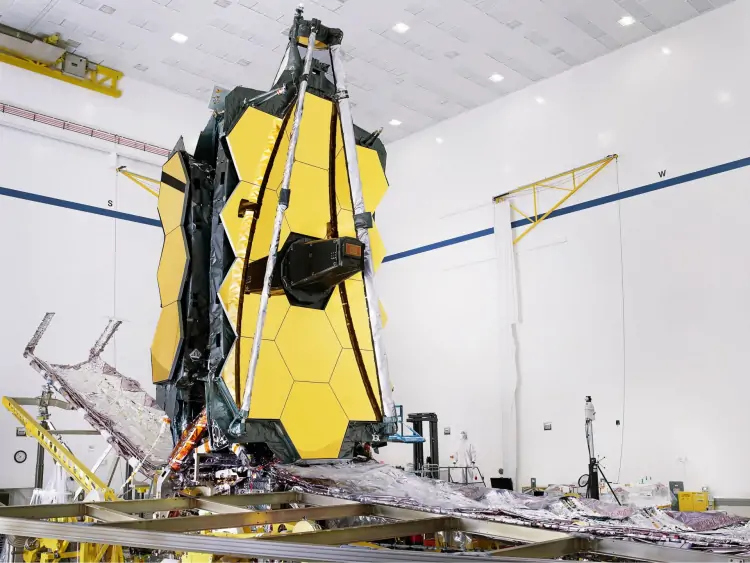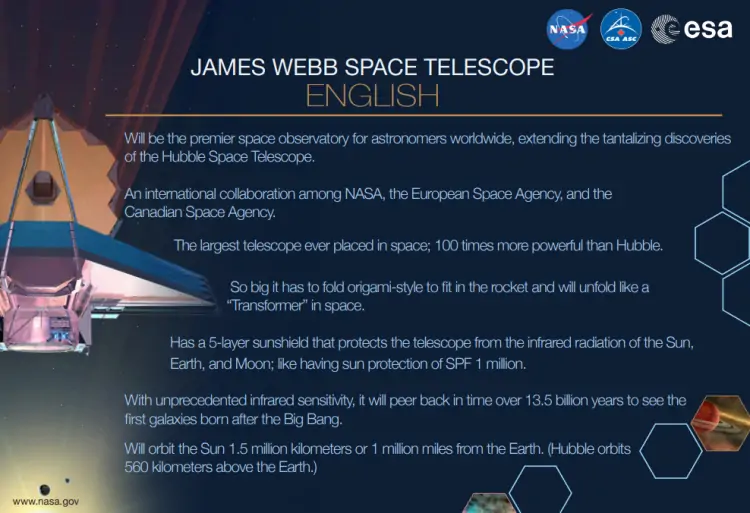Let's recognize the James Webb Space Telescope
The James Webb Space Telescope (sometimes referred to as JWST or Webb) would be a large infrared telescope with a 6.5-metre primary mirror. French Guyana will launch the telescope with an Ariane 5 rocket in 2021.

The James Webb Space Telescope (sometimes referred to as JWST or Webb) would be a large infrared telescope with a 6.5-metre primary mirror. French Guyana will launch the telescope with an Ariane 5 rocket in 2021.
In September 2002, former NASA director James Webb inspired the renaming of the Webb telescope from the New Generation Space Telescope (NGST).
Webb is an international collaboration between NASA, ESA (European Space Agency), and the Canadian Space Agency (CSA). NASA's Goddard Space Flight Centre in Greenbelt, Maryland, is managing the development efforts. The main industrial partner is Northrop Grumman; Webb will work after the launch of the Space Telescope Science Institute.

We have developed various innovative technologies for Webb. These include a main mirror consisting of 18 separate sections, adjusted according to shape after opening and launching. Ultra-light beryllium forms the mirrors. Webb's biggest feature is a five-layer sun, the size of a tennis court, which reduces heat from the sun more than a million times. The telescope's four devices—cameras and spectrometers—have detectors that can record extremely weak signals. A device (NIRSpec) has programmable microcutters that enable observation of up to 100 objects at the same time. Webb also has a cryo-cooler to cool the mid-infrared detectors of another instrument (MIRI), but that's how they work.
- Webb will be the primary space observer for astronomers across the globe, carrying the discoveries of the Hubble Space Telescope.
- It is 100 times more powerful than Hubble and the largest telescope ever deployed into space.
- It's so big that you'll have to fold it in origami shape to fit the rocket, and it'll blow up like a transformer in space.
- Webb has a five-layer Sun layer that protects the Sun from the infrared rays of the Earth and the Moon.
- It's the equivalent of a million-factor solar protector.
- With unprecedented infrared sensitivity, he will observe the first galaxies formed after the Big Bang 13.5 billion years ago. It will orbit the Sun at a distance of 1.5 million kilometres from Earth. The Hubble spacecraft is currently orbiting the Earth at a distance of 560 kilometers.
James Webb telescope detects the earliest ever series of 'cosmic networks'
"Webb will be the largest, most powerful, and most complex space telescope ever built and launched into space. The universe will fundamentally change our understanding.”










